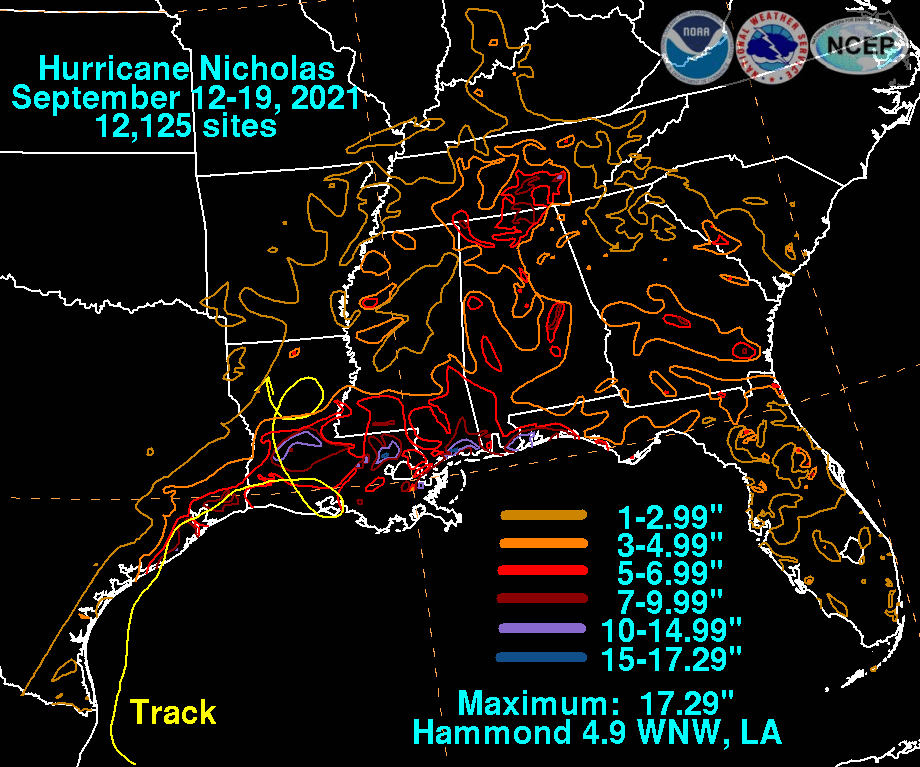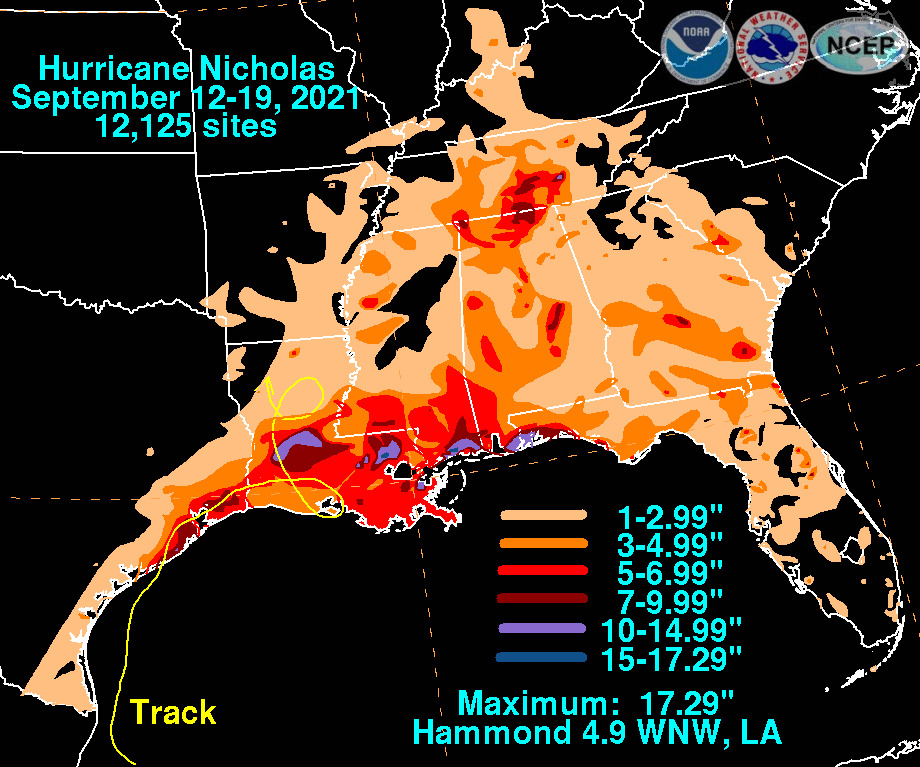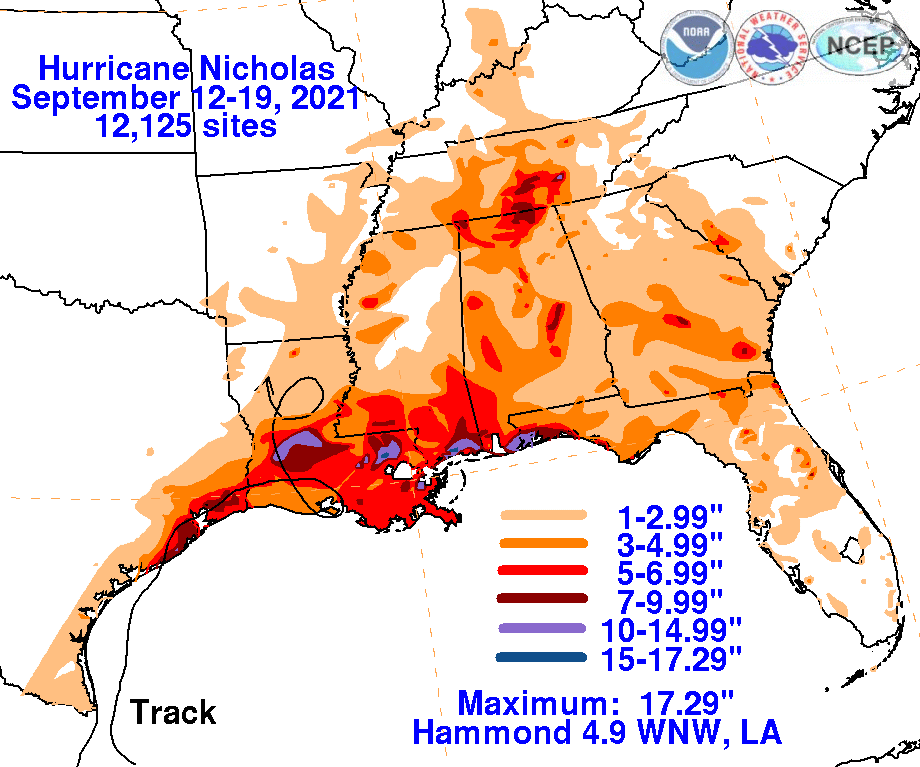A tropical wave emerged off the African coast on August 28th. The system remained disorganized as it moved through the tropical North
Atlantic and Caribbean Sea through September 8th. As the wave moved into Central America, it left behind a surface trough in the
western Caribbean Sea, which tracked northwest into southwest Gulf of Mexico by the 11th. A small area of convection formed nearby
which increased and showed signs of organization on the 12th. By that morning, a tropical storm had formed 115 miles northeast of
Vera Cruz. The cyclone moved north-northwest and wobbled a bit due its center being composed of multiple, competing low-level
swirls which led to occasional center reformations. Despite the vertical wind shear present and its general disorganization,
Nicolas was deemed to become a hurricane 25 miles south-southwest of Matagorda Bay on the evening of the 13th. It made landfall
upon the Matagorda Peninsula that night as its forward motion slowed. As it moved inland, Nicolas weakened into a tropical
storm on its approach to Houston, then a tropical depression as it neared Port Arthur. It became a remnant low west of Lafayette,
Louisiana on the 15th and then looped across the state, even briefly emerging in the Gulf of Mexico on the 16th. The center
became difficult to location on the 17th, and its remnants contributed to heavy rain across the Southeast until the 20th, before
it became absorbed into a larger system to its north and northwest.
The graphics below show the storm total rainfall for Nicholas, which used rain gage information from the National Weather Service River
Forecast Centers, Forecast Offices, and CoCoRAHS.
 |
 |
 |